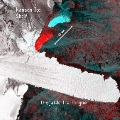Multiple satellites, including Europe's Sentinels, have captured images of two large icebergs that broke away from Antarctica's Nansen ice shelf on 7 April.
Multiple satellites, including Europe's Sentinels, have captured images of two large icebergs that broke away from Antarctica's Nansen ice shelf on 7 April.
The icebergs are drifting to the northeast, propelled by wind, tides and currents. Experts say they do not pose any immediate threat of blocking supply routes to research stations such as the Italian Mario Zucchelli and South Korean Jang Bogo Stations in Terra Nova Bay.
Nonetheless, the icebergs may pose a threat to sea-floor moorings in the region that have been used by Italy's National Antarctic Programme since the 1990s, and more recently by New Zealand ocean scientists.
The Nansen ice shelf, around 50 km long and 25 km wide, developed a fracture over recent years. Ice shelves are particularly sensitive to climate change because they can melt from warm air at the surface and warming ocean waters below.
